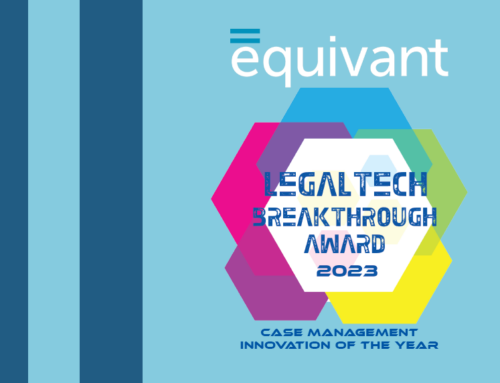Continuing the Conversation On Bias
The Northpointe Suite • An equivant product

We want to eliminate inherent biases in the justice system, one step at a time.
We know that’s a hefty statement, and are clear on the challenges it entails. But here’s the thing: We have the privilege of participating in the justice process at several points, and at each point, we have an opportunity to help practitioners remove the human bias that drove the evolution of many evidence-based assessments in the first place.
When it comes to decision-making, there are three steps: take in information, analyze the data, determine an outcome. And when a human being is solely responsible for all three steps, there’s an inherent risk of bias and inconsistency. It’s not intentional, and it’s not overt; it’s human nature. We’re not infallible. How our day’s going, our historical experiences – even whether we’ve eaten lunch yet – can affect the way we respond to a person or scenario.
Another challenge with human decision-making at this scale is that collecting outcome data is difficult at best, and often doesn’t loop back to the decision maker (for example, a judge). As expert Criminologist Dr. Tim Brennan contends, without some sort of predictive analysis, justice professionals don’t have all the information they need to make a decision about a particular person, regardless of how experienced they are at their jobs.
“How does learning from experience work? Well, you do something, you see the result.” Dr. Brennan says. “Now if you see the result, that means you can adjust what you did, and that feedback allows that process of learning from experience to happen. So anyone who’s not getting outcomes on his or her decisions is behind the eight ball when it comes to learning from experience.”
That’s where an assessment like the COMPAS comes in. Every time a justice professional is faced with that three-step decision making process, the assessment helps remove the potential for bias, human error and basic lack of information to do good analysis. Humans still gather data and interact with defendants on an interpersonal level, and humans are still making the ultimate decisions every step of the way. RNA simply help steer that data collection and inform those decisions with an unbiased analysis of the information.
We’re committed to advancing justice.
One of the biggest myths we encounter is that RNA are inherently racist. Even though researchers have thoroughly debunked these claims, and race is not a data element that’s included in the assessment, we believe that misconceptions of racism are coming from an honest place.
Why? Because systemic racism is pervasive in our society. It’s sometimes overt, but it’s always systemic, and that’s the part that concerns us. Less than 25% of the data points that feed into the COMPAS assessment are static factors, such as a person’s criminal record. In a country where people of color are disproportionately entering the criminal justice system, we know static factors don’t tell the whole story.
That’s why our assessments pair relevant static data points with dynamic elements, including social, attitudinal, habitual, psychological and personality factors that are highly individualized and are provided directly by the person during administration. We put these static and dynamic elements together to cover the spectrum of criminogenic factors that explain crime on a theoretical level.
“One of the ways you understand things is through theory,” Dr. Brennan says. “Theory is an explanation, so why not be aware of the major theoretical explanations of crime. COMPAS is guided by the well-known and well-validated criminogenic theories because there are many paths to crime.”
Race is not one of those paths. But systemic factors can make race appear to be a path to crime because minority groups can be overrepresented in the criminal justice system.
It’s not about risk alone.
The conversation about RNA in criminal justice tends to focus on the “risk” part only, leaving out the all-important “needs”. In fact, most headlines don’t talk about needs at all, which is what drives the best practices behind rehabilitation and ultimately, public safety. If a person is released to his/her community, doesn’t it make sense that justice professionals would want to ensure that person has every chance at success, rather than risk a re-offense?
We don’t just provide justice professionals with a risk categorization, we also provide insight into an individual’s prioritized needs. For example, for a convicted offender, is there a housing situation that would be safer for him/her? Is there family support in place? For justice practitioners with many pressures and circumstances to consider, the ‘needs’ piece can fall by the wayside unless there is a way of capturing that information… and putting it to use.
“It takes specific training to understand what will ameliorate that crime, what will reduce that crime, and what will bring the person back to having a place in society as opposed to being on the outs from society,” Dr. Brennan said. “And this is where needs profoundly comes in. Needs doesn’t have much to do with sanctioning and punishment, but it has everything to do with crime reduction.”
We support efforts to make the justice process more equitable and we believe that public safety is enhanced not when the jails are full, but when detainments make sense for the person, and the crime and needs are considered as part of the bigger picture.
Want to continue the conversation? Contact us today.





